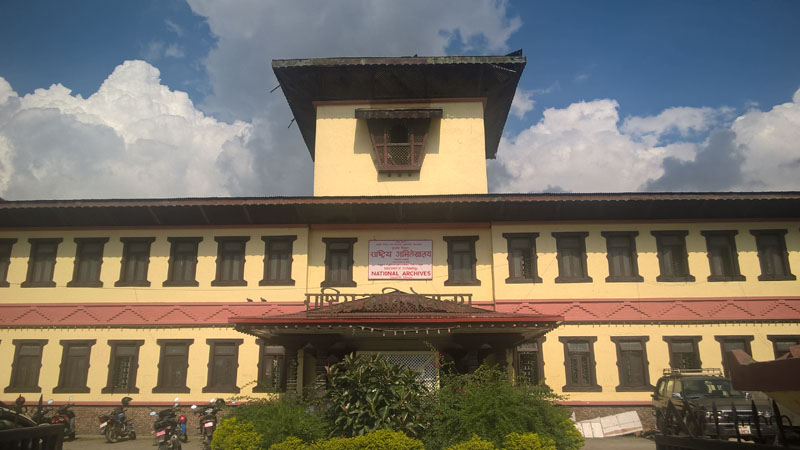Shoddy construction led to collapse of temples: DoA
Kathmandu, December 20
A study recently carried out by the Department of Archaeology has shown that Jaisidewal, Maju Degu, and Trailokya temples in Hanuman Dhoka of Kathmandu collapsed during the April 25 earthquake due to heavy use of modern construction materials.
The investigation team’s summary read, “Although modern construction materials were used to rebuild them earlier, the original structures, such as wooden beams, were left as they were. This led to structural weaknesses.”
The team identified that the core of these monuments was constructed of brick, and the steps of the large stepped plinths were later additions, constructed from massive retaining walls, filled with rubble and soil at Maju Degu and Jaisidewal.
At Jaisidewal, Trailokya and Maju Degu temples, the team also identified that these monuments were built on earlier occupation surfaces. This suggests that these sites were located in areas of prior activity before the construction of current monuments, and that their histories are much more complex than previously thought.
Furthermore, these excavations have shown that the current configurations of these monuments within these historic sites have not always been the same, but represent an organic development of the use of urban space. The team has taken geo-archaeological samples in the hope that these earlier phases can be dated and the changes in the human and environmental activity of these sites can be traced from the earliest times to the present.
The archaeological work was jointly undertaken by the Department of Archaeology, Government of Nepal, Durham University (UK) and the University of Stirling (UK), with financial support from Pashupati Area Development Trust, Arts and Humanities Research Council Global Challenges Research Fund, National Geographic Society Conservation Trust and UNESCO.
Robin Coningham, project co-director and the 2014 UNESCO Chair of Archaeological Ethics and Practice in Cultural Heritage, Durham University, said the results from last year’s mission illustrated the very real threat to the subsurface heritage of Kathmandu Valley and the risks posed by rapid redevelopment without the input of heritage professionals.
This project, with its multidisciplinary network of academics and practitioners, has not only provided new understandings on the character and development of these iconic monuments, but also put in place protocols and methodologies for the protection and preservation of heritage in response to recent and future earthquakes in the region and throughout South Asia.
After successful archaeological interventions in 2015, the multi-disciplinary team continued investigations at the iconic collapsed Kasthamandap with funding from the Arts and Humanities Research Council (UK) and the National Geographic Society. After identifying that the foundations of Kasthamandap were earthquake resilient, the team investigated possible causes of its collapse.
In 2015, the team identified that three of the large saddle stones that would have supported the main timbers of the superstructure were present, though the saddlestone in the northeast was missing. After carefully removing several layers of twentieth century renovations, the northeast saddlestone was identified, sealed below a tiled surface. This indicated that the Kasthamandap’s superstructure rested on three locked joints and one mobile one, weakening the building.






